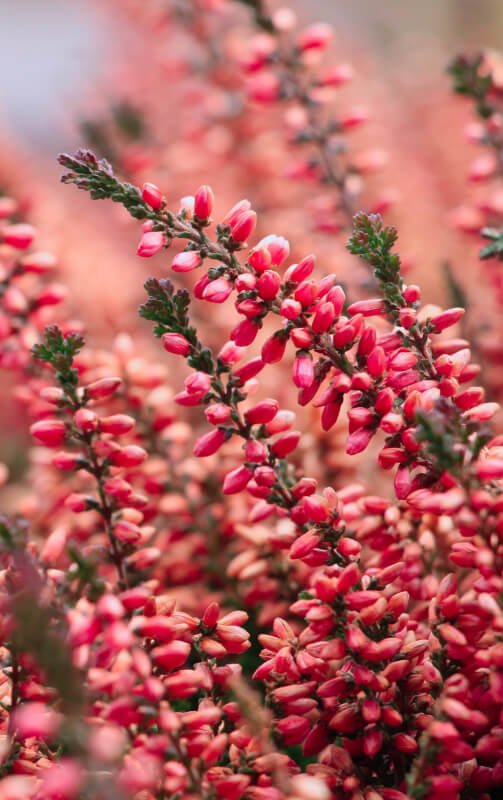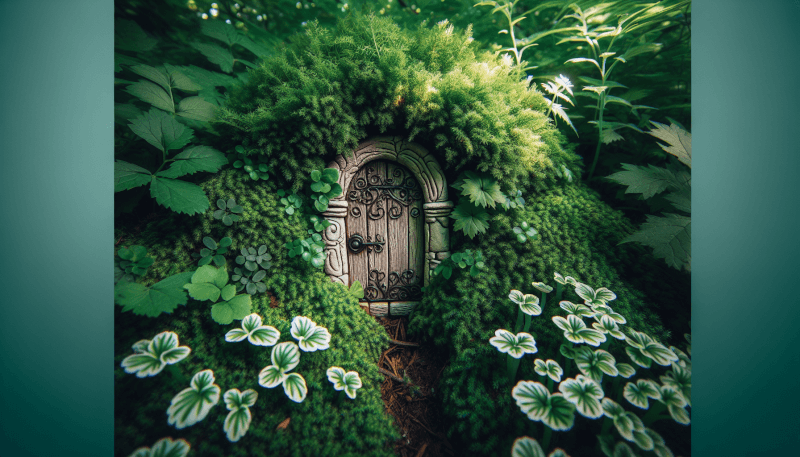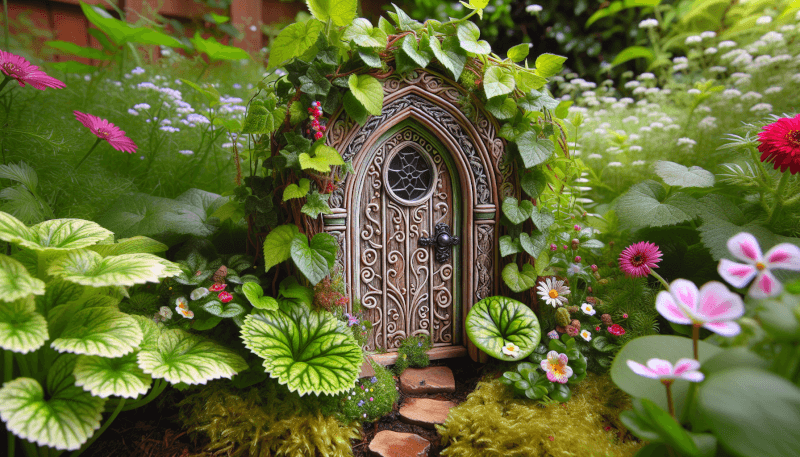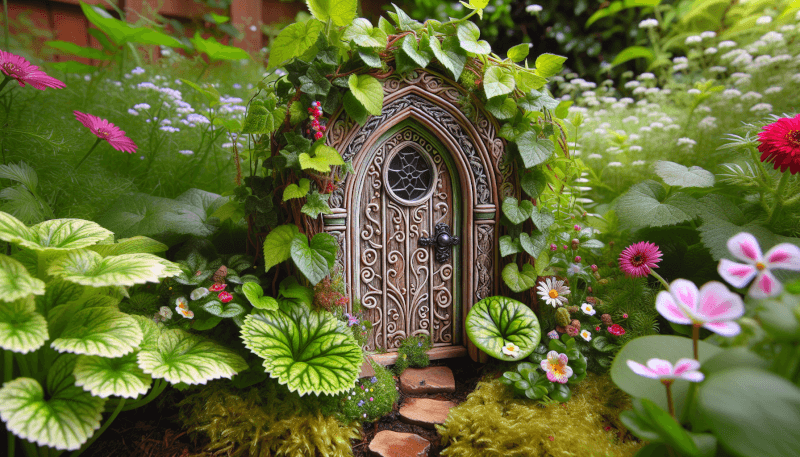Imagine transforming a corner of your garden into a whimsical wonderland with the Beginner’s Guide to Creating a Fairy Garden. This enchanting article will provide you with all the tips and tricks you need to bring these magical creatures to life. From selecting the perfect container to choosing the right plants and accessories, this guide is your ticket to creating a miniature world that will captivate both young and old. Get ready to set your imagination free and embark on a journey into the realm of fairies with the Beginner’s Guide to Creating a Fairy Garden.

Choosing a Location
Outdoor or Indoor?
When it comes to creating a fairy garden, one of the first decisions you’ll need to make is whether you want to create it outdoors or indoors. Both options have their own unique advantages and considerations.
An outdoor fairy garden allows you to take advantage of natural sunlight and the beauty of your surroundings. It can be placed in a corner of your backyard, on a patio, or even in a container garden. On the other hand, an indoor fairy garden can be a charming addition to your home decor, especially if you live in a place with limited outdoor space or harsh weather conditions. You can place it on a windowsill, a bookshelf, or a coffee table.
So, consider your personal preferences, the available space, and the climate of your area when deciding whether to create an outdoor or indoor fairy garden.
Sunlight Availability
Once you’ve decided on the location, it’s important to consider the availability of sunlight. Most plants, including those suitable for fairy gardens, require adequate sunlight to thrive. If you’re creating an outdoor fairy garden, choose a spot that receives at least six hours of sunlight per day.
For indoor fairy gardens, place them near a bright window that provides indirect sunlight throughout the day. You can also use artificial light sources, such as grow lights, to ensure your plants receive the necessary light. Keep in mind that different plants have varying sunlight requirements, so make sure to choose plants that can thrive in the available light conditions.
Accessibility
Another factor to consider when choosing a location for your fairy garden is accessibility. You’ll want to be able to easily reach and tend to your fairy garden, whether it’s for watering, pruning, or adding new accessories.
For outdoor fairy gardens, select a location that is convenient for you to access without obstacles or excessive walking distances. In the case of indoor fairy gardens, make sure the location allows for easy maneuvering and minimal interference with your daily activities. Accessibility is key to maintaining a healthy and enjoyable fairy garden experience.
Designing Your Fairy Garden
Theme Selection
Choosing a theme for your fairy garden is an exciting part of the creative process. You can let your imagination run wild and select a theme that speaks to your personal style and interests. Some popular theme ideas include enchanted forest, beachside paradise, whimsical cottage, or even a magical tea party.
Consider elements such as colors, textures, and accessories that complement your chosen theme. Creating a cohesive and well-executed theme will bring your fairy garden to life and make it a truly enchanting space.
Layout Planning
Before diving into the physical creation of your fairy garden, take some time to plan the layout. Consider the available space, the size of your plants and accessories, and the focal points you want to highlight. A well-planned layout will ensure a visually appealing and harmonious fairy garden.
You can start by sketching out your ideas on paper or using a design software. Experiment with different arrangements and placements until you find a layout that you are happy with. This step will serve as a guide when you start assembling your fairy garden.
Size Considerations
When designing a fairy garden, it’s important to consider the size of your chosen plants and accessories. Fairy gardens are miniature landscapes, so opt for plants and accessories that are proportionate to the overall size of your garden.
Miniature plants, specifically those labeled as “dwarf” or “mini,” are ideal choices for fairy gardens. They have smaller growth habits and will create the illusion of a tiny enchanted world. Pay attention to the mature size of plants to ensure they won’t overshadow the other elements in your garden.
Equally important is selecting accessories in appropriate sizes. Tiny fairy houses, miniature furniture, and delicate decorations will enhance the magical ambiance of your fairy garden. Remember, it’s the small details that make a big impact in a fairy garden.
Selecting Fairy Garden Accessories
The selection of fairy garden accessories is where you can truly let your creativity shine. These accessories add charm and personality to your fairy garden, giving it a unique touch. From fairy houses and bridges to miniature flowers and animals, there is an endless array of accessories to choose from.
Consider the theme of your fairy garden when selecting accessories. For example, if you’re creating a beachside paradise, opt for seashell accents and miniature palm trees. If you’re going for a whimsical cottage theme, choose tiny wooden furniture and whimsical fairy figurines. Mixing and matching different accessories will add depth and visual interest to your fairy garden.

Preparing the Soil
Testing the Soil
Before planting your fairy garden, it’s crucial to test the soil to ensure it is suitable for plant growth. Testing the soil will provide valuable information about its pH level, nutrient content, and drainage capacity.
You can purchase a soil testing kit from a local gardening center or send a sample to a professional soil testing laboratory. The test results will help you determine if any amendments are needed to create an optimal growing environment for your plants.
Amending the Soil
Based on the soil test results, you may need to amend the soil to provide the right conditions for your plants. Common amendments include adding organic matter, such as compost or well-rotted manure, to improve soil structure and fertility. Additionally, you may need to adjust the pH level of the soil by adding lime or sulfur, depending on the plant’s preferences.
Follow the recommendations provided by the soil test results and amend the soil accordingly. This step will ensure that your plants have access to the necessary nutrients and are able to grow and thrive in your fairy garden.
Preparing Containers or Ground
Once you’ve tested and amended the soil, it’s time to prepare the containers or ground where you will be planting your fairy garden. If you’re creating an outdoor fairy garden, choose a well-draining container or prepare a small area in your garden.
For container gardens, make sure the containers have drainage holes to prevent waterlogging and root rot. Fill the containers with a high-quality, well-draining potting mix that will provide the necessary nutrients and aeration for your plants. If you’re planting directly in the ground, ensure that the soil is loose and free from weeds and debris.
Proper preparation of the planting medium will create a healthy and supportive environment for your fairy garden plants.
Selecting Plants
Choosing Plants Suitable for Fairy Gardens
When selecting plants for your fairy garden, it’s important to choose ones that are suitable for the miniature scale and will thrive in the conditions of your chosen location. Look for plants with small leaves, compact growth habits, and delicate flowers that will complement the overall aesthetic of your fairy garden.
Some popular plants for fairy gardens include:
- Miniature roses: These tiny roses come in a variety of colors and have a charming, old-fashioned appeal.
- Thyme: This aromatic herb has small leaves and delicate flowers. It’s a great choice for adding texture and fragrance to your fairy garden.
- Sedums: These succulent plants come in various shapes and colors, and their low-growing nature makes them ideal for ground covers in fairy gardens.
- Creeping phlox: This plant produces cascading clusters of tiny flowers in shades of pink, purple, and white. It’s perfect for creating a carpet of color in your fairy garden.
- Irish moss: This low-growing ground cover plant forms a dense mat of tiny, emerald green leaves. It adds a lush and magical touch to fairy gardens.
When choosing plants, consider their sunlight and water requirements, as well as their compatibility with other plants in your fairy garden. Creating a harmonious plant selection will result in a visually balanced and cohesive fairy garden.
Considerations for Miniature Plants
Miniature plants require specific care to thrive in fairy gardens. Here are a few considerations to keep in mind:
- Proper spacing: Miniature plants still need room to grow, so make sure to space them according to their mature size. Crowding plants can lead to competition for resources and hinder their growth.
- Adequate watering: Although miniature plants have smaller root systems, they still require regular watering. Keep the soil evenly moist, but avoid overwatering, as it can lead to root rot.
- Limited nutrient requirements: Miniature plants have smaller nutrient requirements compared to their full-sized counterparts. Use a balanced, slow-release fertilizer in moderation to avoid overfeeding.
- Shelter from extreme weather: Miniature plants may be more susceptible to extreme weather conditions, such as intense heat or cold. Provide shelter or shade when necessary to protect them.
By understanding and addressing these considerations, you can ensure the health and longevity of your miniature plants in the fairy garden.
Popular Plants for Fairy Gardens
While the selection of plants for fairy gardens is vast, here are some popular choices that are known for their suitability and visual appeal in fairy gardens:
- Miniature roses: These tiny roses are perfect for adding a touch of elegance and romance to your fairy garden.
- English lavender: With its beautiful purple flowers and aromatic foliage, English lavender adds charm and fragrance to any fairy garden.
- Creeping thyme: This low-growing herbaceous perennial forms a lush mat of tiny leaves and produces delicate pink or purple flowers. It’s ideal for filling in gaps in your fairy garden.
- Irish moss: As mentioned earlier, this ground cover plant creates a carpet of lush, emerald green foliage that adds a magical touch to fairy gardens.
- Baby’s tears: This delicate plant has tiny leaves that cascade down gently, resembling a soft carpet of green. It’s perfect for creating a whimsical and dreamy atmosphere in your fairy garden.
Remember to consider the sunlight requirements, water needs, and the overall aesthetics of these plants when making your selections. The right combination of plants will help bring your fairy garden to life and create an enchanting oasis.

Planting Your Fairy Garden
Planting Techniques
When it comes to planting your fairy garden, it’s important to follow proper planting techniques to ensure the success of your plants. Here are some key steps to keep in mind:
- Prepare the soil or planting medium by loosening it and removing any weeds or debris.
- Dig a hole that is slightly wider and deeper than the root ball of the plant.
- Gently remove the plant from its container, being careful not to damage the roots.
- Place the plant in the hole, making sure it is at the same depth it was previously growing.
- Backfill the hole with soil, firming it gently around the roots to eliminate air pockets.
- Water the newly planted plant thoroughly to settle the soil around the roots.
Following these planting techniques will promote healthy root growth and increase the chances of successful establishment in your fairy garden.
Spacing and Arrangement
Proper spacing and arrangement of plants in your fairy garden is essential for their overall health and visual appeal. Consider the mature sizes of the plants and allow adequate space between them to avoid overcrowding.
Spacing the plants appropriately ensures that they have enough room to grow and access essential nutrients and sunlight. It also prevents the spread of diseases and reduces competition for resources. As a general rule, provide at least a few inches of space between plants, allowing them to fill in the gaps naturally over time.
When arranging the plants, think about creating depth and dimension in your fairy garden. Place taller plants towards the back and shorter plants towards the front to create a visually pleasing composition. Also, consider the color contrasts and textures of the plants to add interest and variation to your fairy garden.
Watering Tips
Proper watering is crucial for the health and vitality of your fairy garden. Here are some watering tips to ensure your plants thrive:
- Check the moisture level of the soil regularly. Stick your finger into the soil up to the second knuckle; if it feels dry, it’s time to water.
- Water deeply and thoroughly to encourage plants to develop a robust root system.
- Avoid overwatering, which can lead to root rot and other plant diseases. Ensure good drainage to prevent waterlogging.
- Water in the morning or early evening to minimize water loss due to evaporation.
- Consider using a watering can or a drip irrigation system for precise watering, especially for smaller containers or intricate fairy gardens.
Remember that specific watering requirements may vary depending on the plants you have chosen and the prevailing weather conditions. Monitor your fairy garden regularly and adjust the watering schedule accordingly.
Caring for Your Fairy Garden
Regular Watering
Maintaining proper hydration for your fairy garden is essential to keep the plants healthy and flourishing. Regular watering helps the plants absorb nutrients and ensures adequate moisture levels for their growth.
Monitor the soil moisture and water whenever necessary, keeping in mind the specific needs of your plants. Factors such as temperature, humidity, and sunlight exposure can affect the frequency of watering.
Avoid overwatering, as it can lead to root rot and other issues. On the other hand, underwatering can cause wilting and hinder plant growth. Achieving a balance and providing consistent moisture will help your fairy garden thrive.
Fertilizing
To keep your fairy garden plants nourished and vibrant, regular fertilization is important. Fertilizers provide essential nutrients that may be lacking in the soil, promoting healthy growth and flowering.
Choose a balanced, slow-release fertilizer specifically formulated for potted plants or fairy gardens. Follow the manufacturer’s instructions for application rates and frequency. Over-fertilizing can burn the plants’ roots, so it’s crucial to use fertilizers in moderation.
During the active growing season, you can apply a diluted liquid fertilizer every two to four weeks. However, it’s advisable to reduce or stop fertilization during winter or when the plants enter dormancy.
Pruning
Pruning is an essential maintenance task to keep your fairy garden tidy and prevent overcrowding. Regular pruning helps control the size and shape of the plants, encourages new growth, and improves airflow, reducing the risk of disease.
Trim off any dead, damaged, or diseased leaves, stems, or flowers as soon as you notice them. Use sharp, clean pruning shears to avoid injuring the plants. You can also pinch back the tips of the plants to promote bushier growth and prevent leggy stems.
Pay attention to the growth patterns of the plants and adjust your pruning techniques accordingly. Remember to step back and assess the overall appearance of your fairy garden to maintain a balanced and visually appealing composition.
Pest and Disease Control
Keeping pests and diseases at bay is crucial to ensure the health and vitality of your fairy garden. Here are some tips for effective pest and disease control:
- Regularly inspect your plants for signs of pests, such as chewed leaves, webbing, or visible insects. Identify the pest and choose an appropriate control method, such as manually picking off pests, using insecticidal soap, or employing biological controls like ladybugs.
- Maintain good garden hygiene by removing fallen leaves, debris, and weeds that can harbor pests or diseases.
- Monitor the health of your plants and identify and address any signs of disease promptly. Common diseases in fairy gardens include powdery mildew and root rot. Remove and dispose of infected plant material and consider adjusting watering practices to prevent disease spread.
- Avoid over-fertilizing, as excessive nutrient levels can attract pests and encourage disease development. Follow the recommended application rates and schedule.
By practicing regular monitoring and employing appropriate pest and disease control methods, you can ensure a thriving and pest-free fairy garden.

Creating Fairy Garden Accessories
DIY Fairy Houses
One of the most exciting aspects of creating a fairy garden is designing and building your own fairy houses. DIY fairy houses allow you to unleash your creativity and add a personal touch to your garden.
Start by selecting a suitable base for your fairy house, such as a small wooden birdhouse, a clay pot, or even a recycled container. Gather materials such as twigs, pebbles, moss, and small decorations to embellish your fairy house.
Use hot glue or waterproof adhesive to attach the materials to the base, layering them to create walls, roofs, and doors. Get creative with paint, miniatures, and other decorations to bring your fairy house to life. As you work on your DIY fairy house, consider the scale, theme, and overall aesthetics of your fairy garden.
Miniature Furniture and Decorations
To make your fairy garden truly enchanting, don’t forget to add miniature furniture and decorations. These small accessories bring a sense of whimsy and charm to your fairy garden.
You can purchase miniature furniture and decorations from garden centers, online stores, or even create your own. Look for tiny benches, tables, chairs, and lanterns to create inviting sitting areas for the fairies. Consider adding small water features, such as mini ponds or fountains, to create a tranquil atmosphere.
Handmade accessories, such as tiny bird feeders or clotheslines, can add a unique and personalized touch to your fairy garden. The possibilities are endless, so let your imagination run wild and have fun dressing up your magical miniature world.
Adding Pathways and Walkways
Pathways and walkways add structure and visual interest to your fairy garden. These miniature pathways can guide fairies and visitors through your enchanting creation.
You can use small pebbles, gravel, or miniature paving stones to create a pathway. Simply lay them out in the desired pattern on the soil or base of your fairy garden. Use a waterproof adhesive or sand to secure the pathway materials in place.
Consider creating curves, loops, or stepping stones to make the pathway look more organic and inviting. You can also incorporate different textures or colors to complement the overall aesthetics of your fairy garden. With a carefully designed pathway, your fairy garden will feel like a welcoming home for fairies and humans alike.
Water Features
Adding a water feature to your fairy garden adds an element of tranquility and magical charm. The sound and movement of flowing water can create a peaceful atmosphere and attract fairies to your garden.
There are various options for incorporating water features into your fairy garden, depending on the size and style of your garden. You can choose a small solar-powered water pump to create a gentle flowing stream or a miniature waterfall. Alternatively, a tiny birdbath or pond can serve as a reflective surface and a refreshing oasis for fairies.
Remember to consider the scale of the water feature and the space available in your fairy garden. Ensure that the water feature is properly installed and does not pose any safety risks. With the addition of a water feature, your fairy garden will become a serene and captivating retreat.
Attracting Fairies to Your Garden
Choosing Fairy Attracting Plants
To truly bring your fairy garden to life, attracting fairies is the ultimate goal. While fairies are elusive and mysterious creatures, incorporating certain plants can increase the chances of attracting them.
Some plants believed to attract fairies include:
- Foxgloves: These tall and elegant flowers are said to be the favorite of fairies. Their vibrant blooms bring color and height to fairy gardens.
- Lavender: Fairies are said to be attracted to the fragrance of lavender, making it an excellent choice for your garden.
- Thyme: Thyme is not only suitable for fairy gardens but is also believed to be a favored herb of fairies. Its delicate leaves and tiny flowers add beauty and enchantment to your fairy garden.
- Pansies: Pansies are often associated with fairies and are believed to attract them with their cheerful colors and whimsical appearance.
While there are no guarantees that planting these specific plants will draw fairies to your garden, they add beauty and intrigue, creating an environment that encourages the imagination to take flight.
Setting Up a Welcoming Environment
Creating a welcoming environment for fairies is essential to attract them to your garden. Consider the following elements to make your fairy garden an inviting oasis for these mythical beings:
- Create cozy nooks and resting spots with miniature furniture and accessories. Fairies are said to appreciate comfortable places to rest and observe their surroundings.
- Install small fairy doors or windows on tree trunks or rocks to create an entry point for fairies. These magical doorways serve as a portal between the fairy world and ours.
- Add whimsical details and surprises throughout your fairy garden, such as tiny signs, figurines, or hidden treasures. These surprises delight not only fairies but also human visitors, bringing a sense of wonder to your garden.
By creating a welcoming and magical atmosphere, you are setting the stage for fairies to visit and make themselves at home in your fairy garden.
Using Natural Elements to Attract Fairies
In addition to plants and physical features, incorporating natural elements in your fairy garden can further enhance its appeal to fairies. These elements create a sense of harmony and unity between your fairy garden and the surrounding environment.
Consider adding natural materials such as rocks, pebbles, or driftwood to create rustic accents. Fallen leaves, twigs, and bark can be used as pathways or to add texture and depth to your fairy garden.
You can also incorporate elements from the natural habitat of fairies, such as small seashells or crystals. These items are believed to possess mystical energy and may attract fairies to your garden.
Remember, it’s the combination of plants, enchanting features, and natural elements that create a captivating space, making fairies feel at home in your garden.

Common Mistakes to Avoid
Overcrowding or Oversizing
One common mistake when creating a fairy garden is overcrowding or oversizing the plants and accessories. It’s important to maintain a balanced and visually appealing composition, considering the overall scale and size of your garden.
Avoid planting too many plants or choosing plants that will outgrow the space quickly. Overcrowding can lead to competition for resources and hinder the growth of individual plants. Provide adequate space for each plant to thrive and allow them to fill in gaps naturally over time.
Similarly, choose accessories and decorations that are proportionate to the size of your fairy garden. Tiny details and delicate accents will add charm without overpowering the other elements.
Inadequate Watering or Drainage
Proper watering and drainage are essential for the health of your fairy garden. Neglecting to water your plants regularly can lead to wilting, yellowing, and overall poor growth.
On the other hand, overwatering can lead to root rot and an environment conducive to pests and diseases. Remember to water your fairy garden consistently, considering the specific needs of the plants and prevailing weather conditions.
Additionally, ensure that your containers or the ground where your fairy garden is located have adequate drainage. Without proper drainage, excess water can accumulate, causing the roots to rot and the plants to suffer.
Neglecting Maintenance
Maintaining your fairy garden is an ongoing task that deserves attention and care. Neglecting regular maintenance can result in overgrown plants, wilting, and an unkempt appearance.
Make it a habit to regularly inspect your fairy garden for any signs of pests, diseases, or nutrient deficiencies. Prune and trim plants as necessary to maintain their shape and promote healthy growth.
Remove fallen leaves, debris, and weeds that may hinder the growth of your plants or attract pests. By staying proactive in your maintenance routine, you can ensure a healthy and thriving fairy garden.
Troubleshooting Tips
Identifying Common Plant Problems
Sometimes, despite your best efforts, plants in your fairy garden may encounter problems. Here are some common plant problems and how to identify them:
- Yellowing leaves: Yellowing leaves can be a sign of overwatering, nutrient deficiencies, or pest infestations. Check the moisture level of the soil, adjust watering practices, and ensure proper fertilization.
- Wilting: Wilting can be caused by both underwatering and overwatering. Check the moisture level of the soil and adjust watering accordingly. Wilting can also be a sign of root rot, so check the roots for signs of decay.
- Leaf spots or discoloration: Leaf spots or discoloration can be caused by fungal or bacterial diseases. Remove the infected leaves and consider treating with appropriate fungicides or bactericides if necessary.
- Stunted growth: Stunted growth may indicate nutrient deficiencies or poor drainage. Amend the soil with suitable fertilizers or organic matter and ensure proper drainage to allow the plants to reach their full potential.
Identifying the cause of plant problems can help you take timely action and rectify the issue before it spreads to other plants in your fairy garden.
Dealing with Fairy Garden Pests
Pests can be a nuisance in any garden, including fairy gardens. Here are some common pests in fairy gardens and how to control them:
- Aphids: These small, soft-bodied insects can suck sap and cause curled or distorted leaves. Use a strong spray of water, insecticidal soap, or organic insecticides to control aphids.
- Slugs and snails: These slimy creatures can feast on your plants, leaving behind unsightly holes. Control them by handpicking, using organic slug repellents, or creating barriers, such as copper tape, around your fairy garden.
- Spider mites: These tiny pests can cause stippling or bronzing of leaves. Control spider mites by spraying with water or using insecticidal soap. Encouraging beneficial insects, such as ladybugs, can also help control spider mite populations.
Regular monitoring and early detection of pests are key to preventing extensive damage to your fairy garden. Choose organic pest control methods whenever possible to minimize harm to beneficial insects and the environment.
Addressing Soil Issues
Soil issues, such as poor drainage, nutrient deficiencies, or imbalanced pH levels, can affect the health and growth of your fairy garden plants. Here’s how to address common soil issues:
- Poor drainage: If your soil has poor drainage, consider amending it with organic matter, such as compost or peat moss, which can improve soil structure and allow excess water to drain away.
- Nutrient deficiencies: If your plants show signs of nutrient deficiencies, such as yellowing or stunted growth, fertilize them with a balanced, slow-release fertilizer or organic amendments, following the recommended rates.
- Imbalanced pH levels: If your soil’s pH level is imbalanced and not suitable for your plants’ needs, amend it with lime to raise the pH or sulfur to lower the pH, depending on the specific requirements of your plants.
Remember to test your soil periodically to monitor its health and make any necessary adjustments to create an ideal growing environment for your fairy garden.
Creating a fairy garden is a delightful and rewarding experience. By following the guidelines outlined in this beginner’s guide, you can design, plant, and maintain a magical oasis that will enchant both fairies and humans alike. So let your imagination take flight, and embark on your fairy garden journey today!


